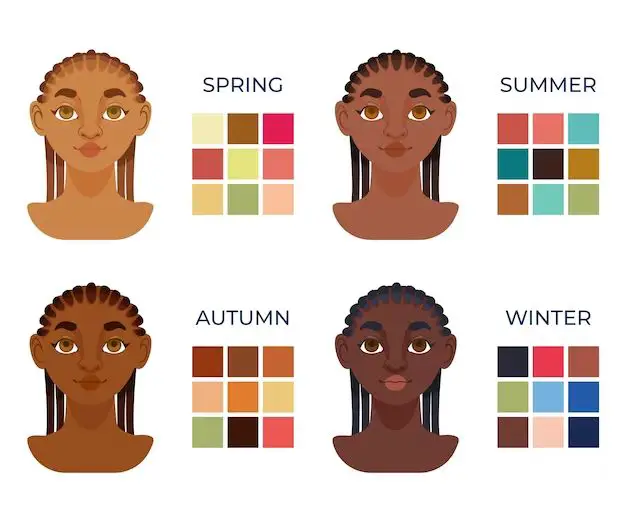The skin colour chart used to classify and describe human skin colour is typically called the Fitzpatrick skin type scale. This scale was developed in 1975 by dermatologist Thomas B. Fitzpatrick to classify a person’s complexion and tolerance to sunlight. The Fitzpatrick scale remains one of the most recognized and commonly used systems for dermatology today.
Fitzpatrick Skin Type Scale
The Fitzpatrick skin phototyping scale classifies skin colour and response to UV light exposure into six categories:
| Type | Tone | Tanning Ability | Burning Risk |
|---|---|---|---|
| I | Pale white skin | Always burns, never tans | High |
| II | Fair or pale white skin | Usually burns, minimal tanning | High |
| III | White to olive skin | May burn, tans average | Moderate |
| IV | Olive to light brown skin | Rarely burns, tans easily | Low |
| V | Brown skin | Very rarely burns, tans darkly | Very low |
| VI | Dark brown to black skin | Never burns, always tans darkly | Minimal |
As the scale progresses from Type I to Type VI, the skin tone gets darker and the risk of sunburn decreases. Those with lighter Type I and II skin are very sensitive to sun exposure, while those with darker Type V and VI skin are well protected and rarely experience sunburn.
Determining Fitzpatrick Skin Type
The Fitzpatrick scale relies primarily on visual inspection of skin colour and tone to determine skin type. In addition to observable colour, the following factors may also be considered:
- Ethnicity and genetic background
- Eye colour
- Natural hair colour
- Freckling tendency
- Experiences with sunburns and tanning
Genetics play a major role in natural skin pigmentation and response to UV radiation. People of Caucasian descent typically fall into lighter Fitzpatrick skin types, while those of African, Hispanic/Latin, Middle Eastern, or South Asian descent will likely be a darker Fitzpatrick skin type.
In some cases, an individual’s characteristics may fall into multiple adjacent Fitzpatrick categories. For example, someone with a Mediterranean complexion may exhibit traits of both Type III and IV skin. A qualified dermatologist can best assess the skin and make an accurate determination of skin type.
Importance of Determining Fitzpatrick Skin Type
Knowing your Fitzpatrick skin type has important health and lifestyle implications. It can help:
- Assess risk of skin cancer and sun damage
- Guide sun protection recommendations
- Determine safe tanning and sun exposure times
- Tailor laser or aesthetic skin treatments
- Select appropriate skin care products
Individuals with lighter Fitzpatrick skin types need to be vigilant about sun safety and protecting their skin from UV rays. They burn easily and are at higher risk for melanoma and other skin cancers if exposed to excess sun without proper broad-spectrum protection.
Those with darker pigmentation can typically tolerate longer sun exposure with less risk of burning. However, no skin type is immune from sun damage, so appropriate UV protection for your skin type is still important.
Criticisms and Limitations
While ubiquitous in dermatology, the Fitzpatrick scale is not without limitations:
- Only accounts for genetic, chronic skin pigmentation and does not consider tanning response
- Does not incorporate all human skin colour variations
- Does not factor in how pigmentation varies on different body parts
- Only looks at reaction to UVB rays, not UVA rays
- Does not consider how skin may darken or lighten with age
Additionally, some criticize application of the Fitzpatrick scale as it relates primarily to European ancestry and has a limited number of categories. Other tools have been developed to augment Fitzpatrick and provide greater diversity and gradations for classifying human skin colour.
Alternative Skin Colour Classifications
While the Fitzpatrick scale remains popular, especially in North America, alternative skin colour classification systems also exist. These include:
- Von Luschan Skin Colour Chart – Developed in the early 1900s, this 36 colour graded scale tried to capture greater skin colour variance across populations worldwide.
- Taylor Hyperpigmentation Scale – A more recent scale from 2006 that expanded Fitzpatrick to account for skin colour differences within darker skin types.
- Spectrophotometers – Devices that measure skin colour numerically based on reflectance and melanin content, removing visual subjectivity.
- The Pantone SkinTone Guide – A 2014 skin colour matching system with 110 new shades outside the Fitzpatrick scale to increase diversity.
These tools provide more nuanced categorization and measurement of human skin colour variation. However, Fitzpatrick remains the most widely used method in medicine for its simplicity and ability to convey clinical meaning related to skin cancer risk.
Conclusion
The Fitzpatrick scale remains the standard model for classifying skin colour in dermatology practice. This six-type scale categorizes human skin tone based primarily on visible assessment, with Type I being the palest and Type VI being the darkest. Knowledge of one’s Fitzpatrick skin type has important health implications in assessing risk of sun damage, guiding photoprotection recommendations, and safe sun exposure times. While criticized by some as limiting, the Fitzpatrick scale endures for its clinical utility related to UV skin cancer prevention.


